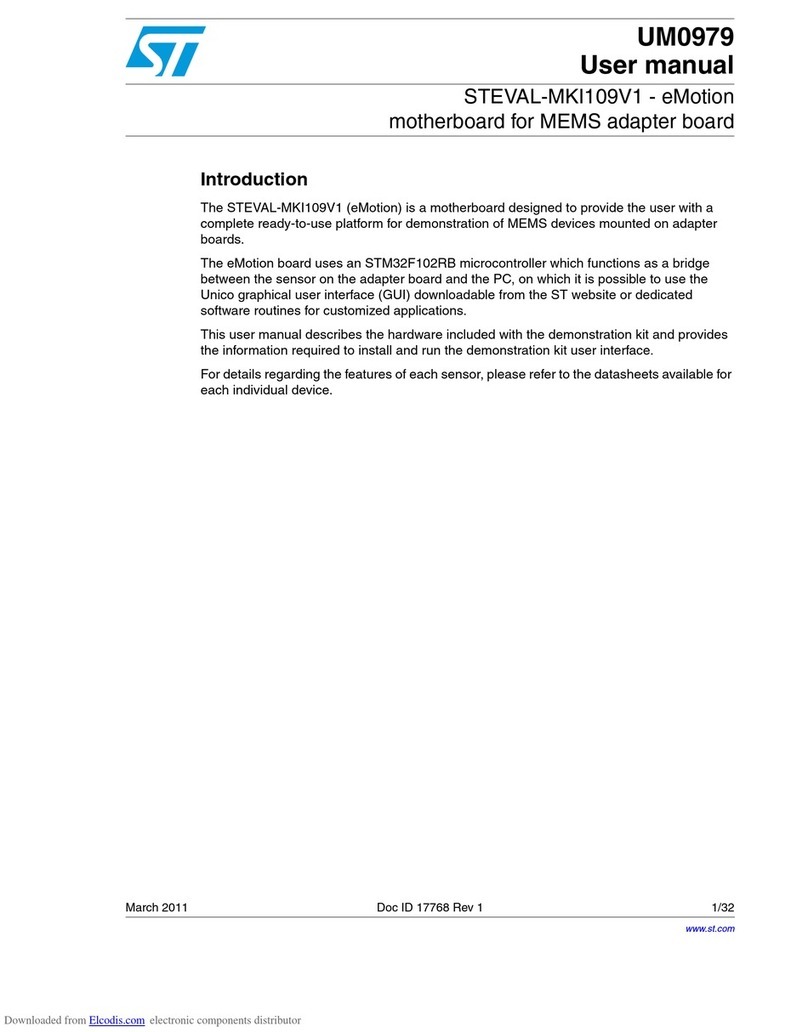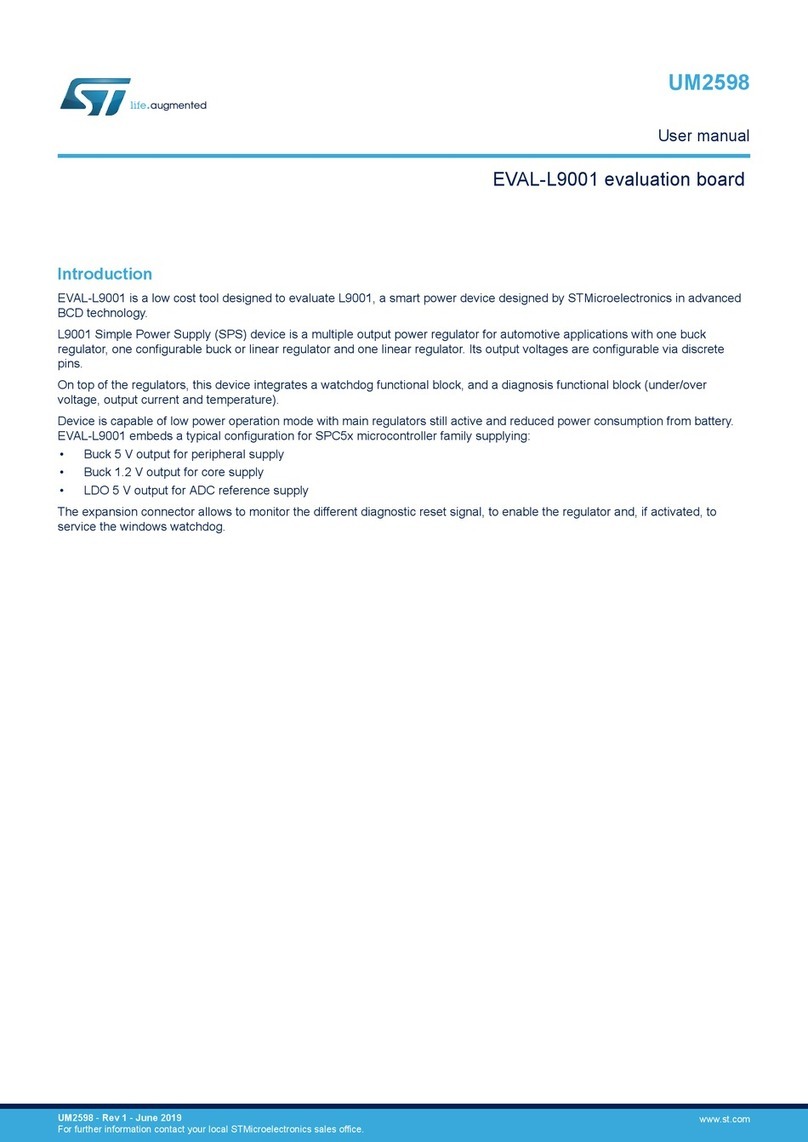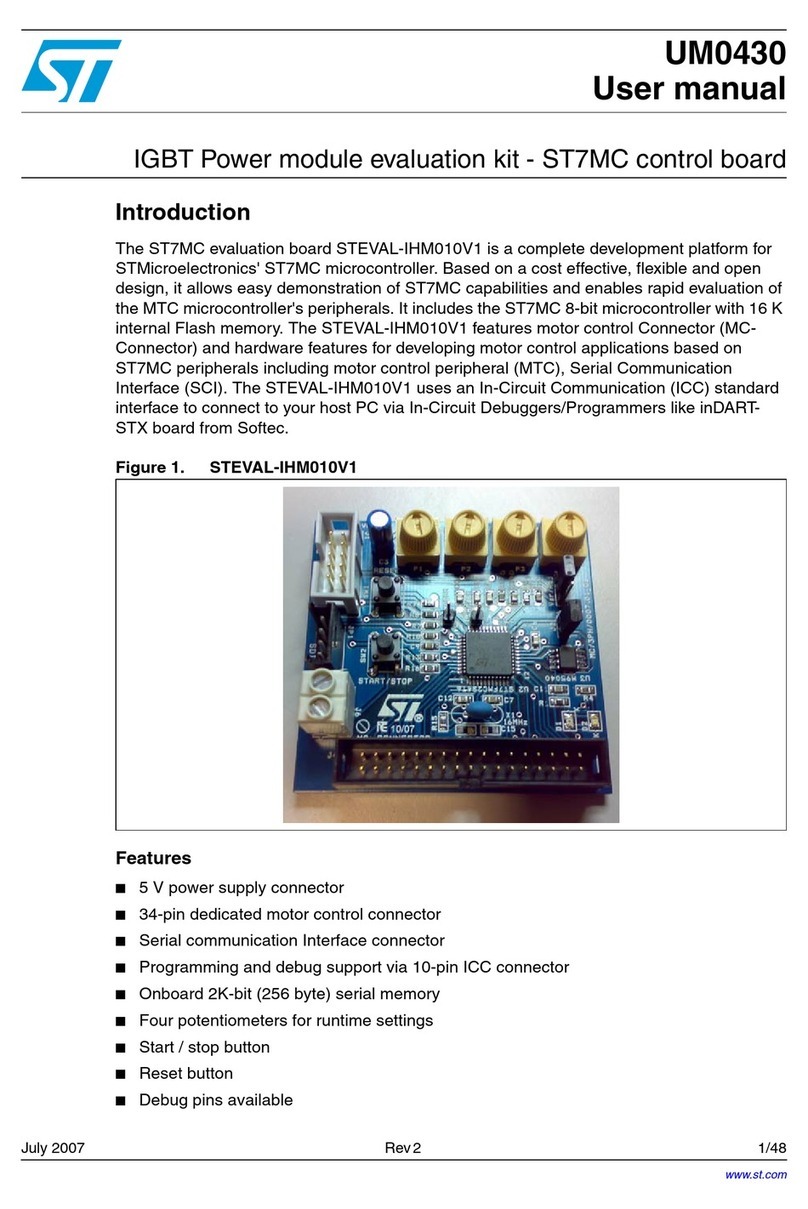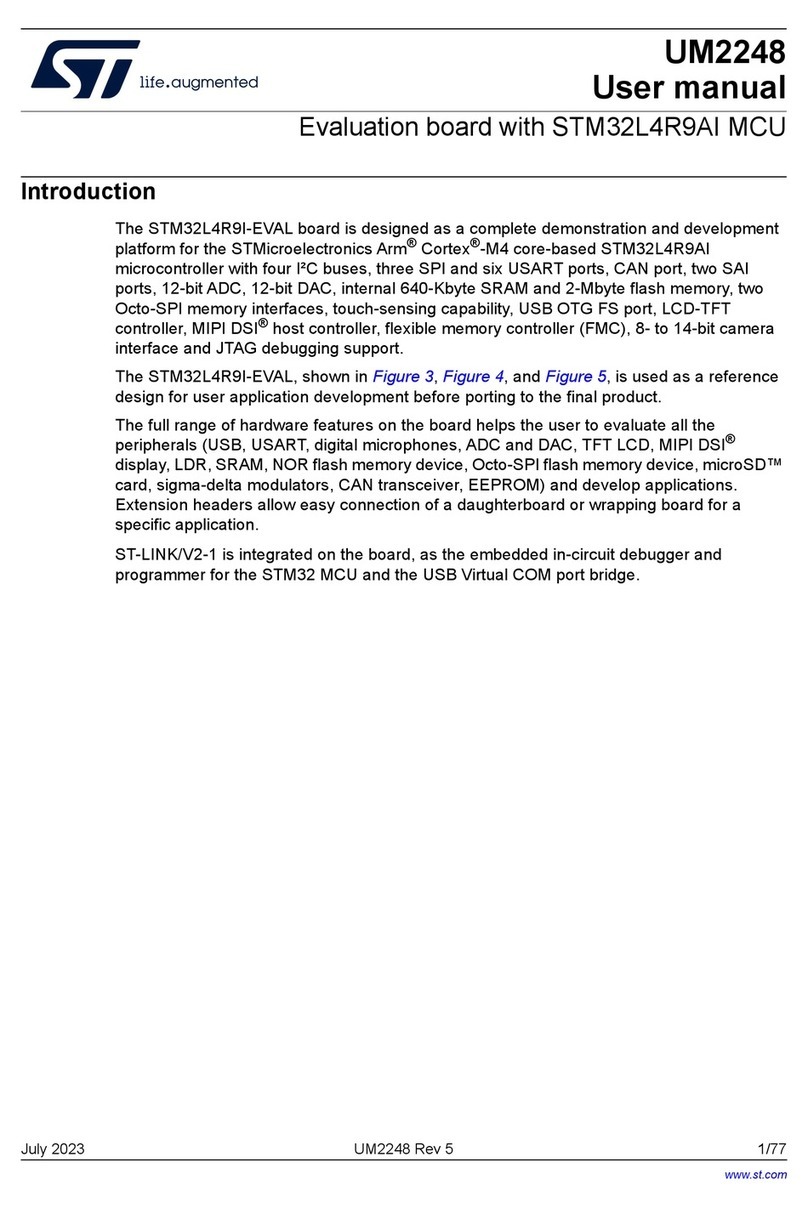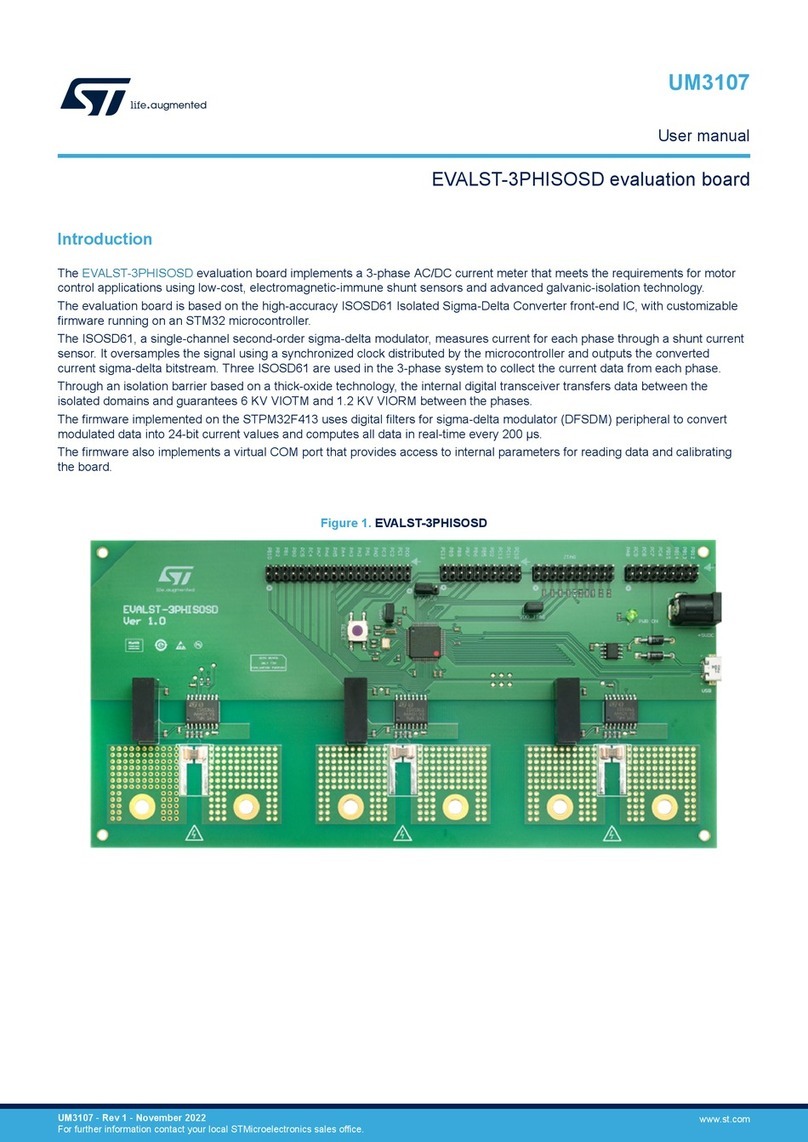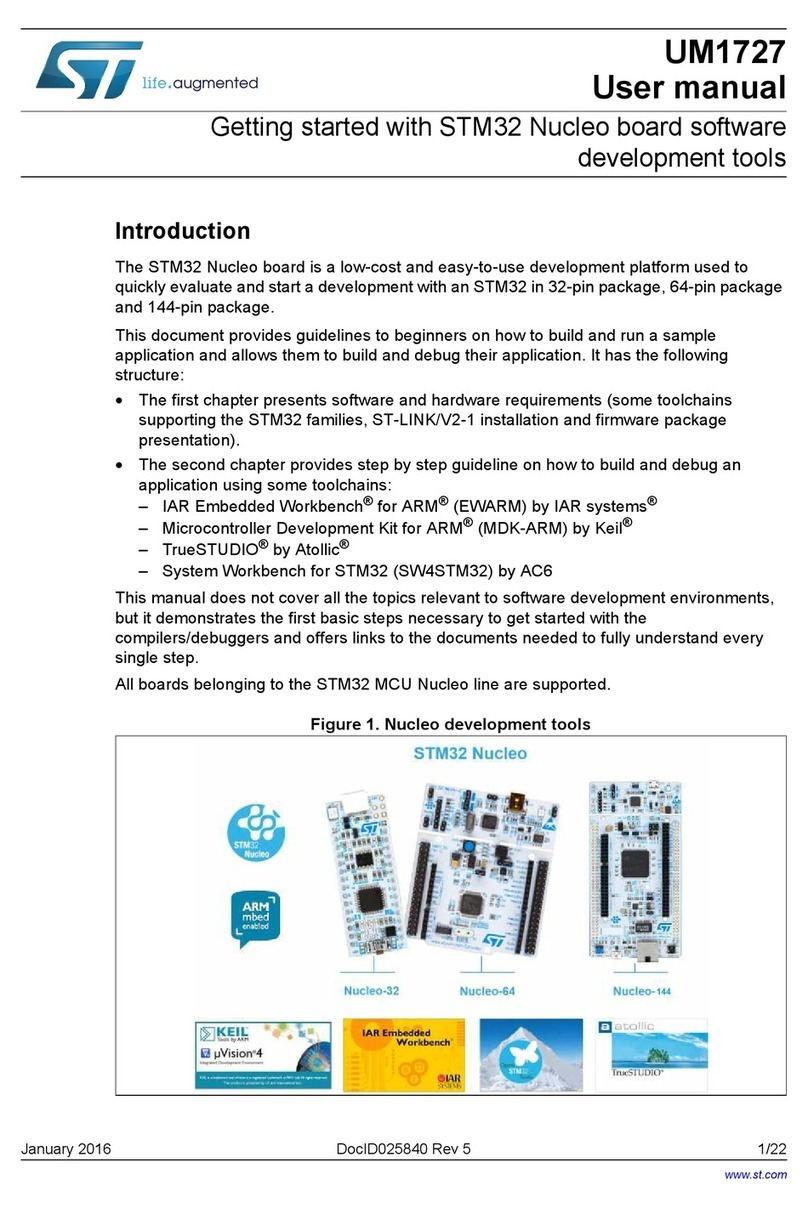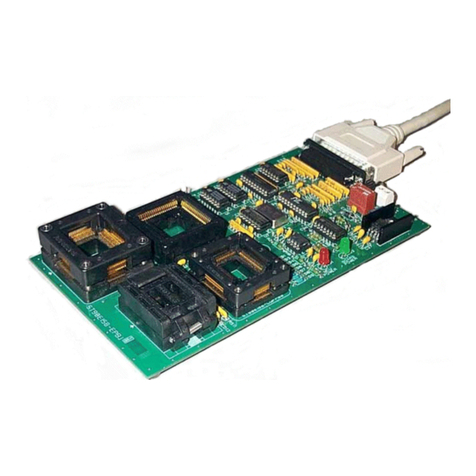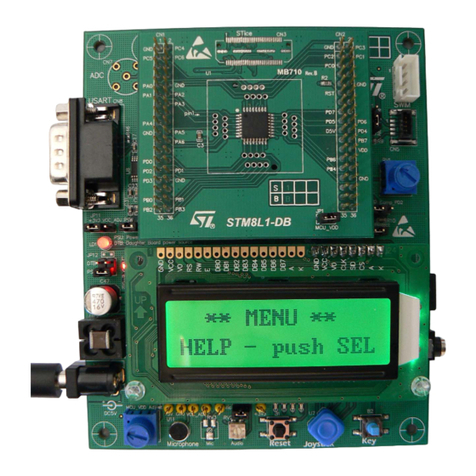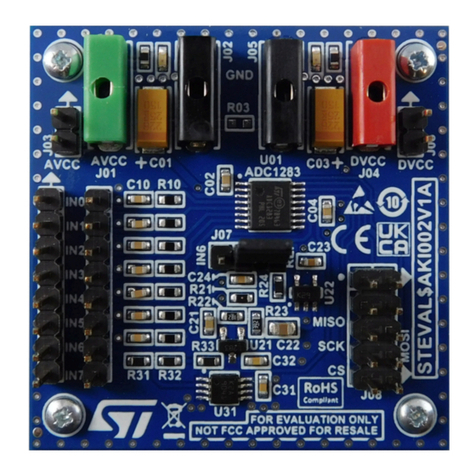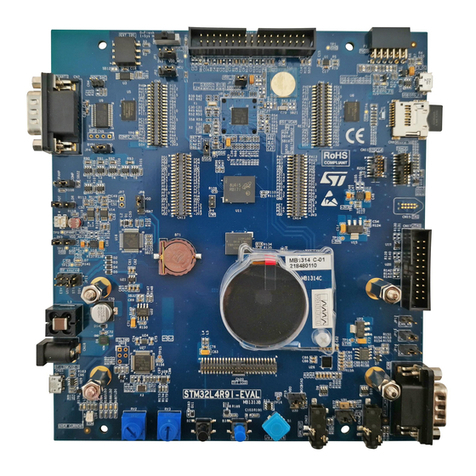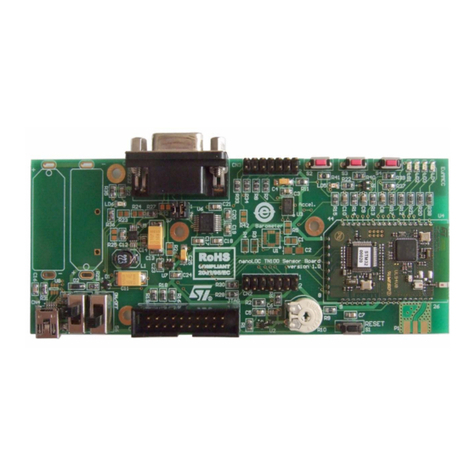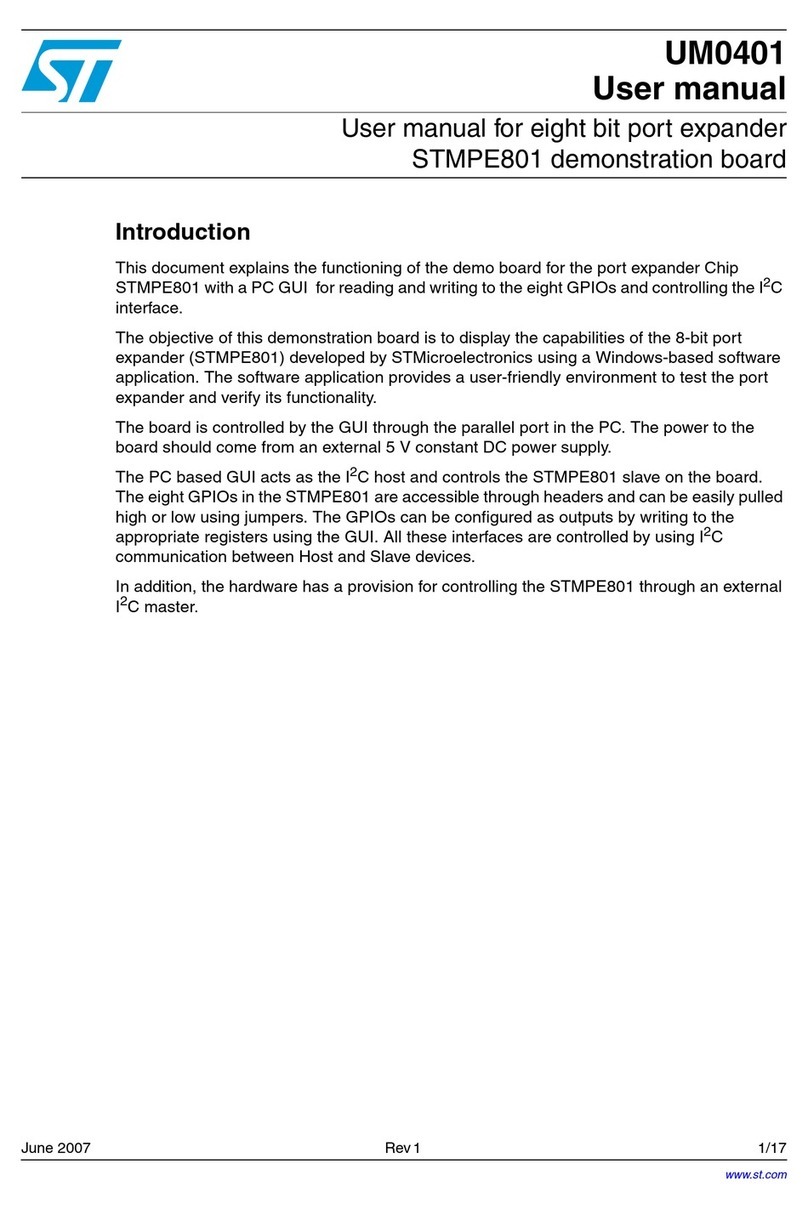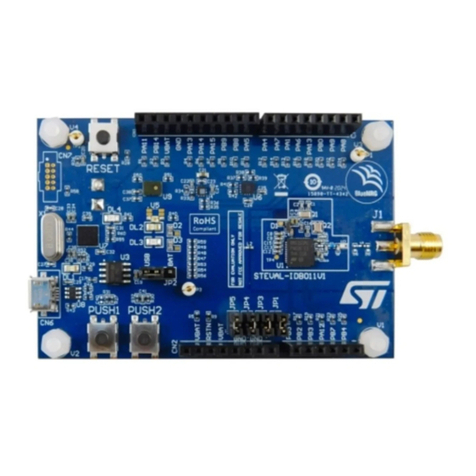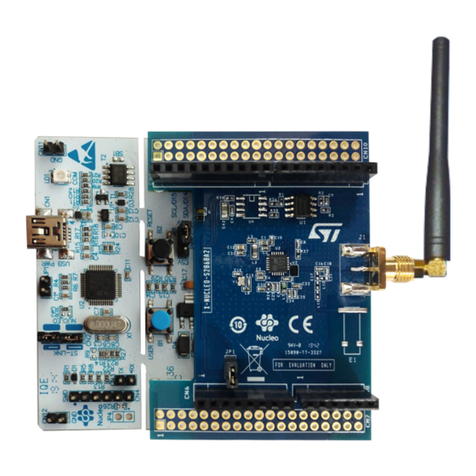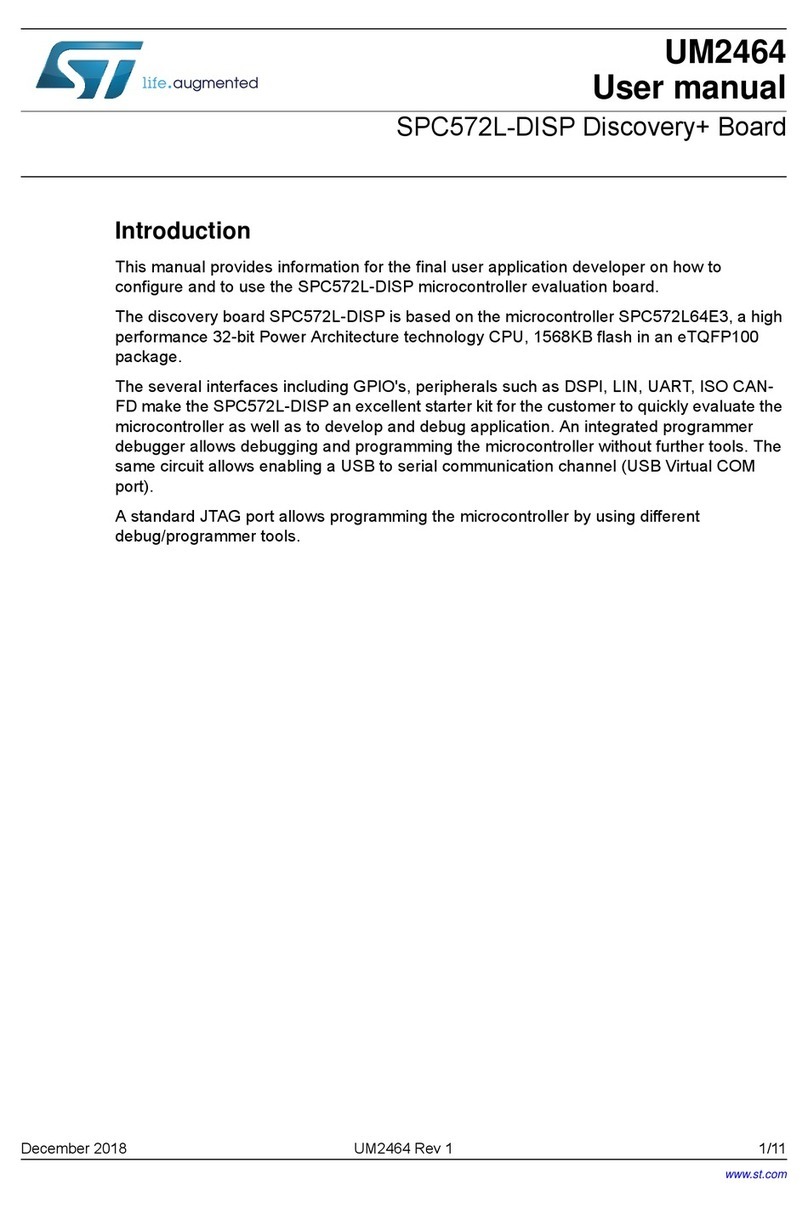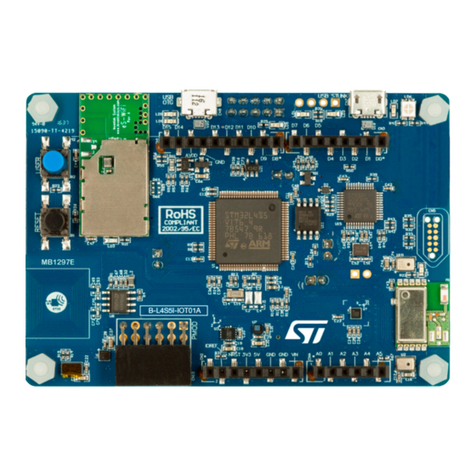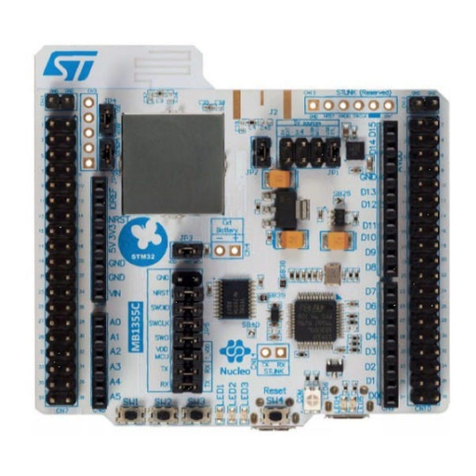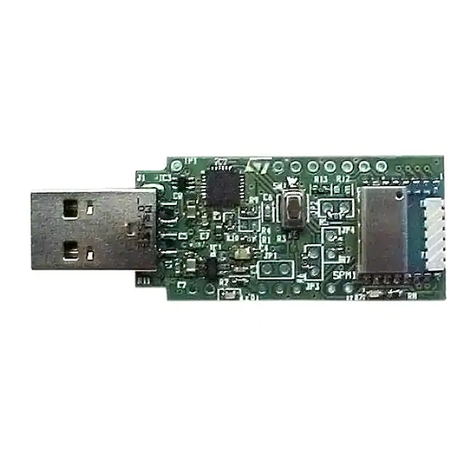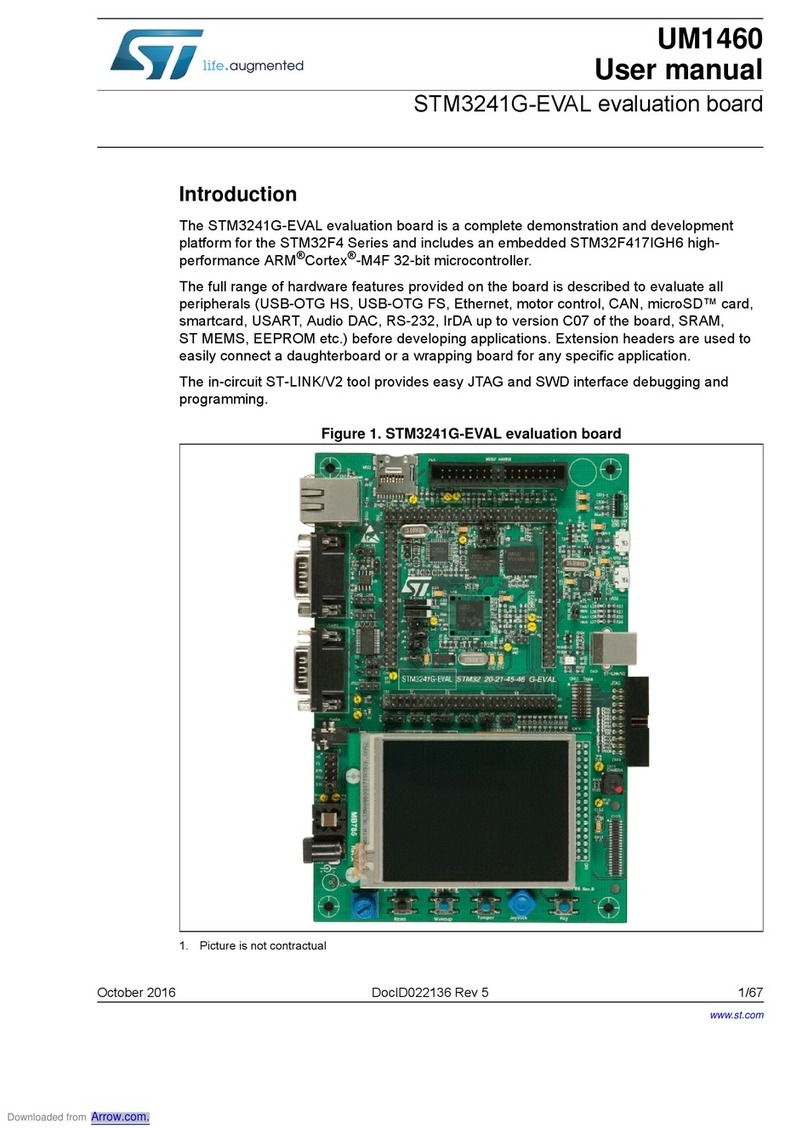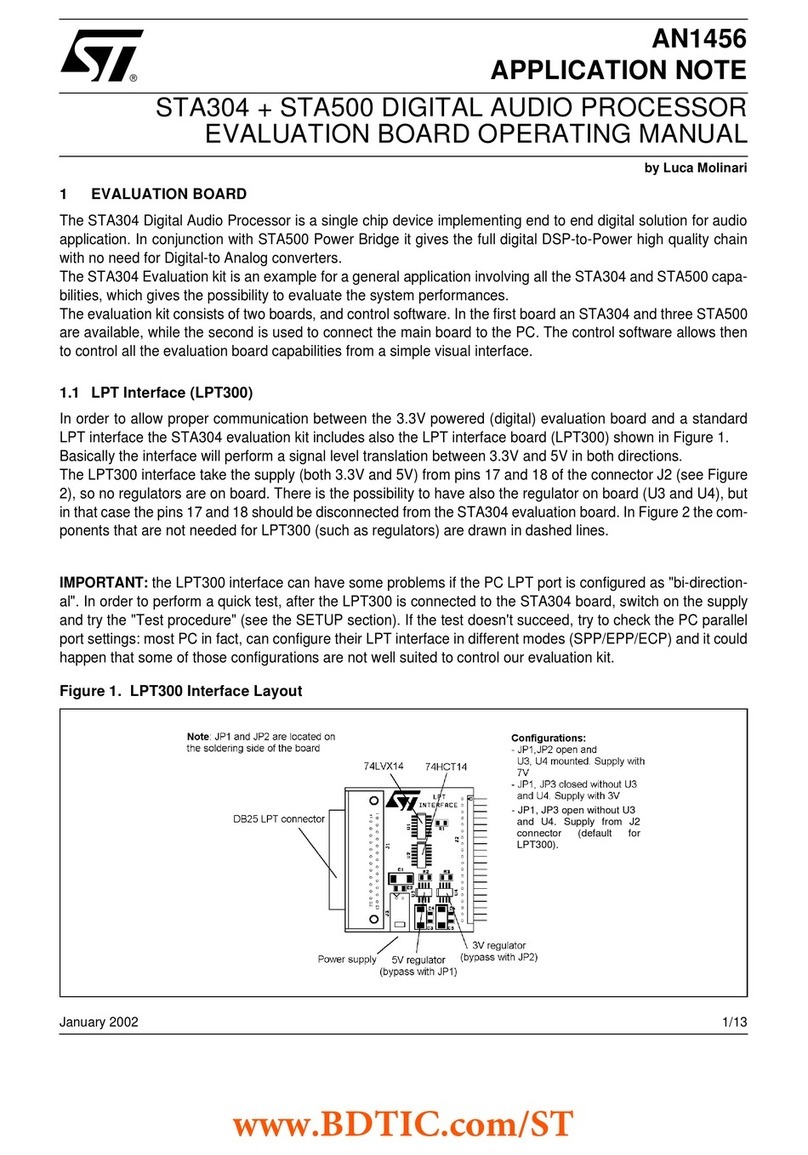The Interrupt clear button first writes the INT_Clear_Tx register and then writes 1 in the Clr_Int bit in Com reg-
ister.
Tx frequency setup allows modifying the regulation control algorithm minimum and maximum frequency and the
starting ping frequency.
Note: The optimal ping frequency for the STEVAL-ISB042V1 evaluation board is approximately 130 kHz.
ASK demodulation thresholds parameter defines the ASK receiver sensitivity.
Figure 9. GUI Rx mode: TX mode tab
1.6 GUI: NVM configuration access
1.6.1 Qi NVM configuration
The Qi configuration tab contains manufacturer and device identifiers sent over the Qi protocol.
The tab contains also default values for the VOUT voltage, Input current limit and Interrupt enable registers
which can be configured separately for baseline power profile (BPP) operation and for extended power profile
(EPP). BPP values are loaded in the registers and subsequently updated if EPP is negotiated.
STWLC33 automatically terminates the power transfer if the load is below a certain threshold for a certain period
of time. By default, this feature is eliminated by setting the lowest possible current and the longest possible time.
Note: Qi specification does not require this feature.
To maintain the Qi foreign object detection feature accurate, you must provide the correct values representing the
coil parameters and the mechanical setup.
The evaluation kit contains components with the correct values to be used.
But, if, for example, the coil is replaced by another type of coil, you must update the following parameters:
•FOD_A
•FOD_B (different values for BPP and EPP)
•FOD_C (same value for BPP and EPP)
•Reference quality factor (for EPP only)
UM2289
GUI: NVM configuration access
UM2289 - Rev 2 page 8/26
